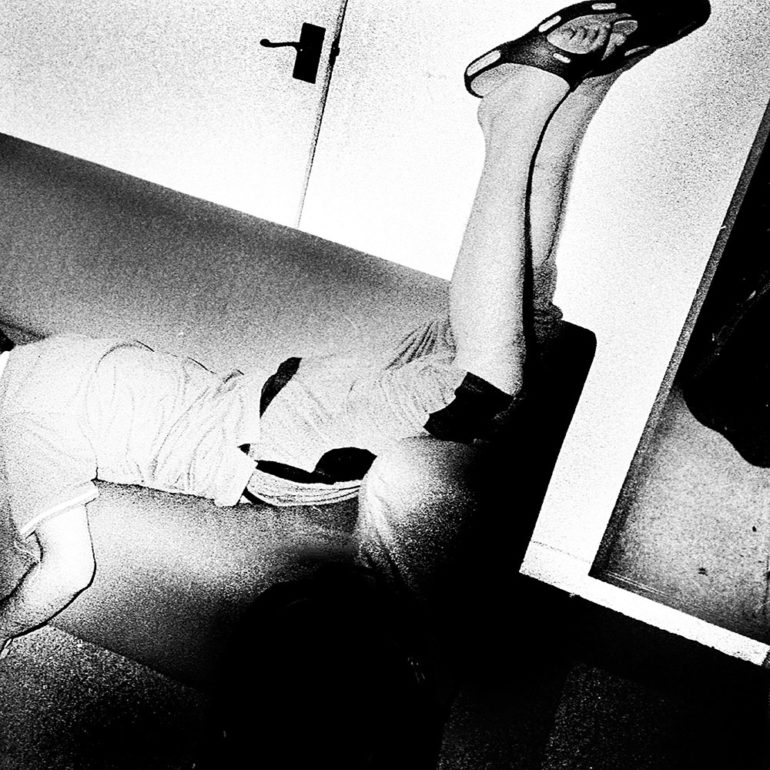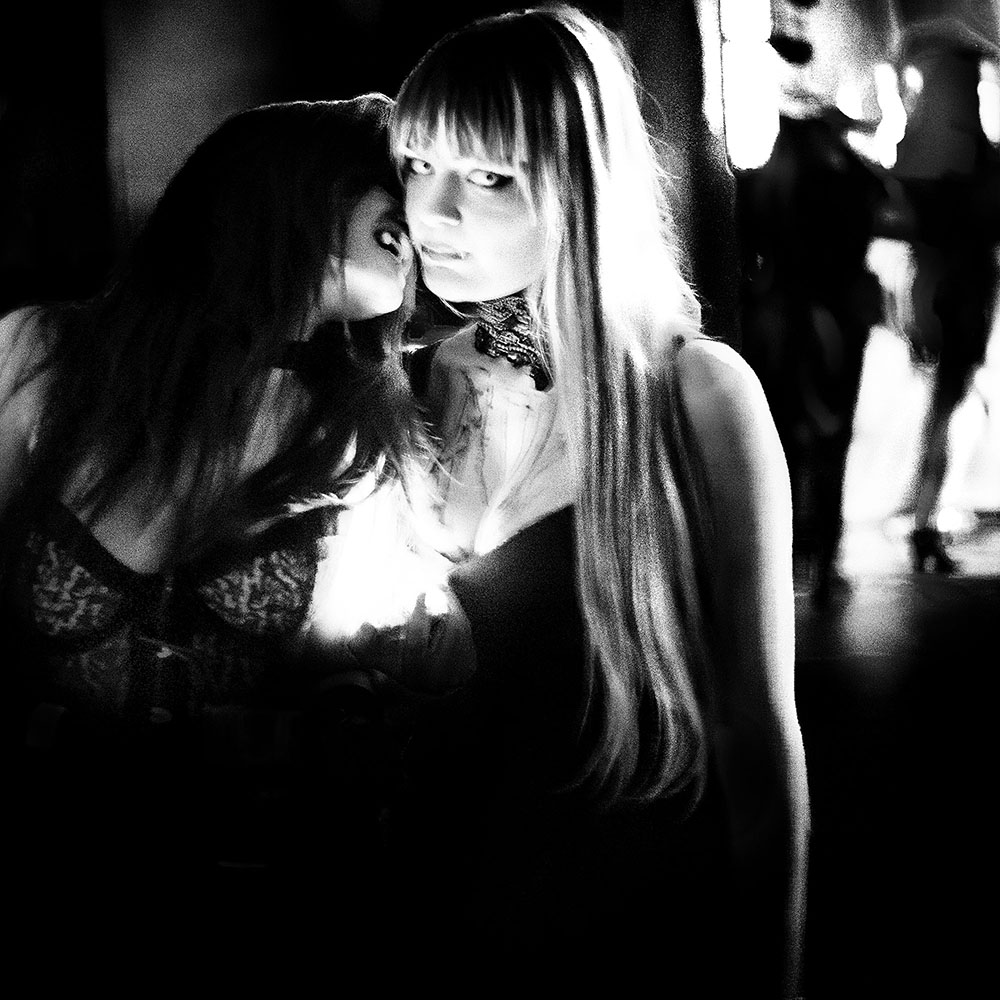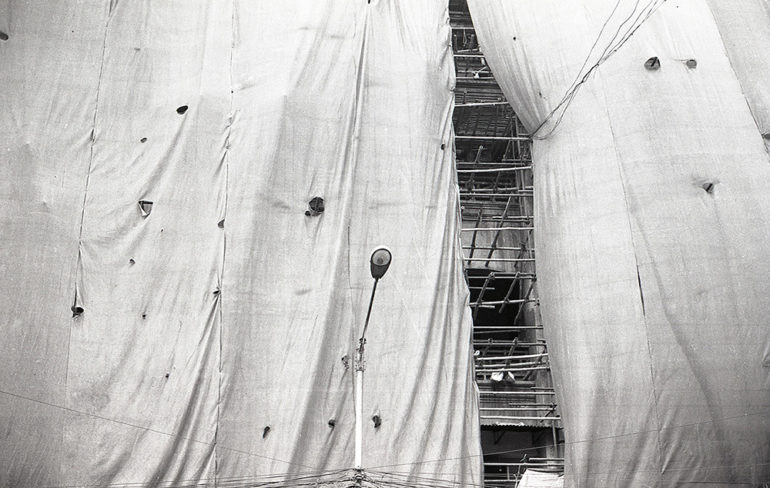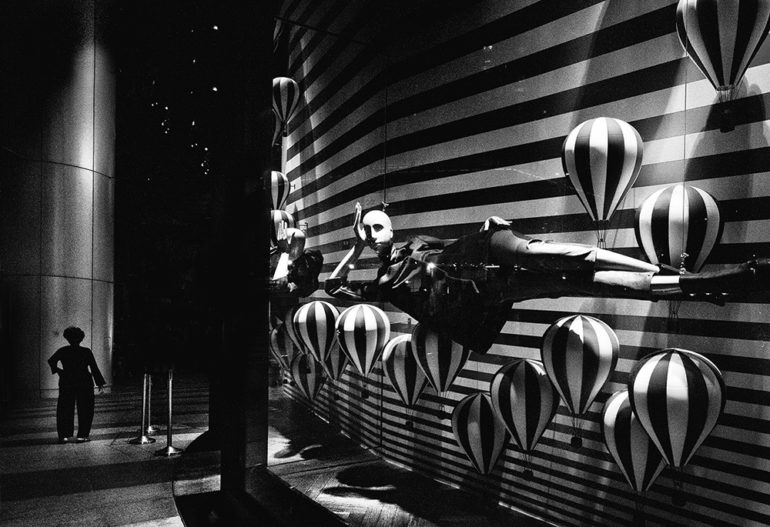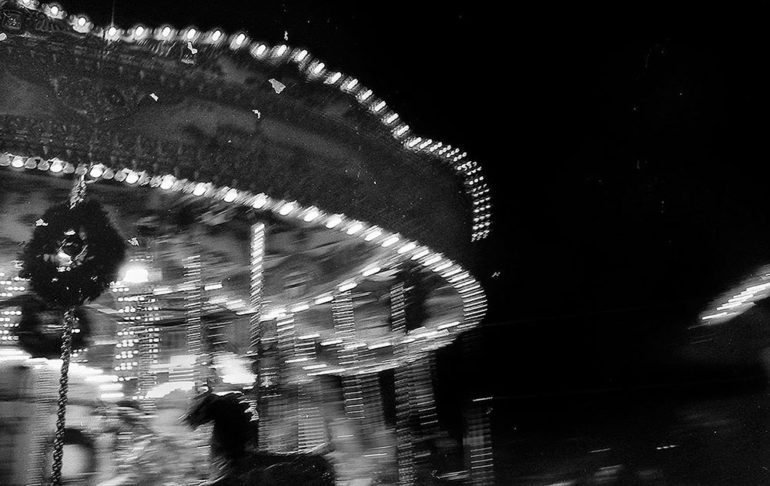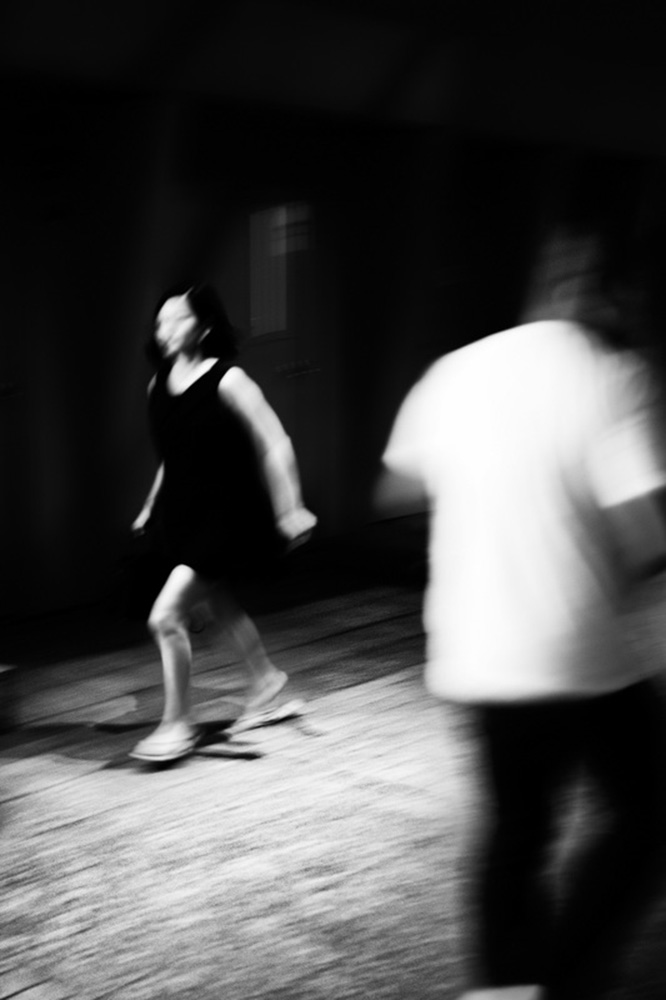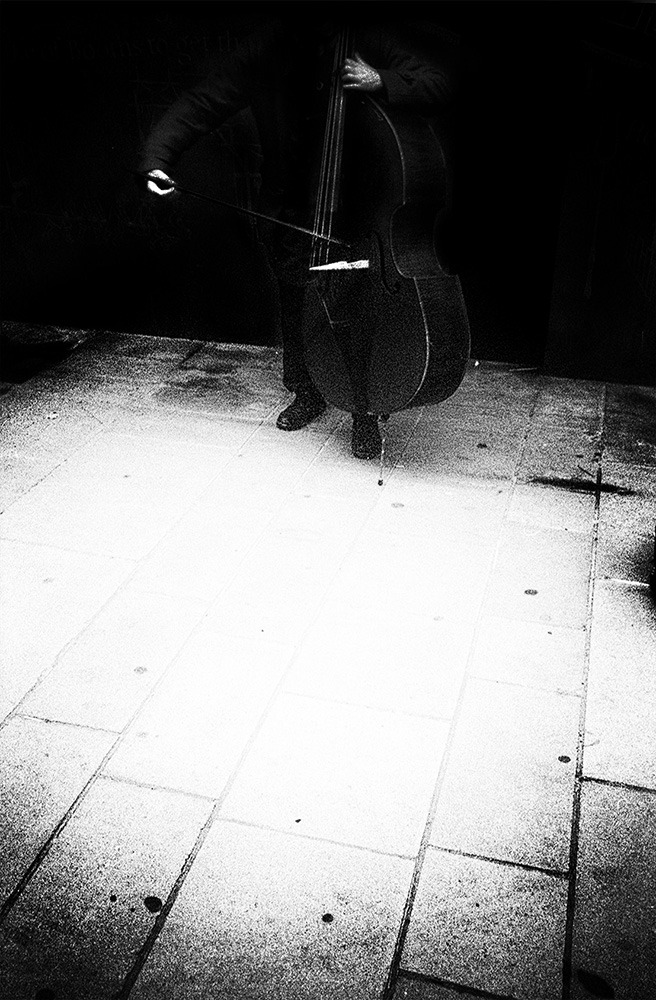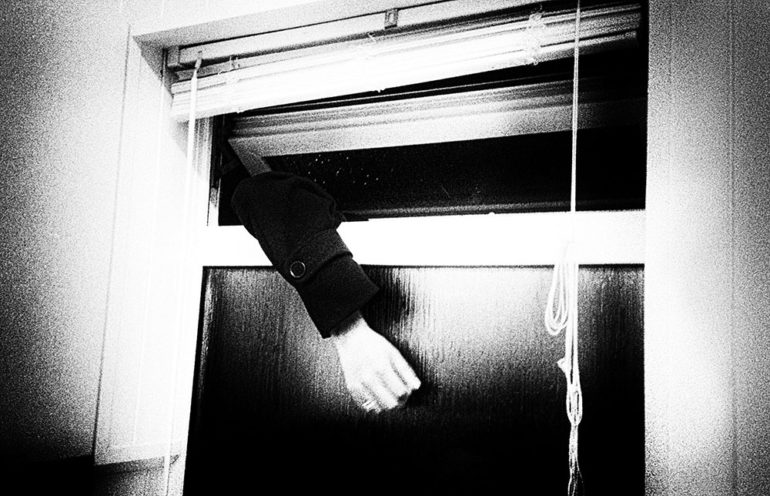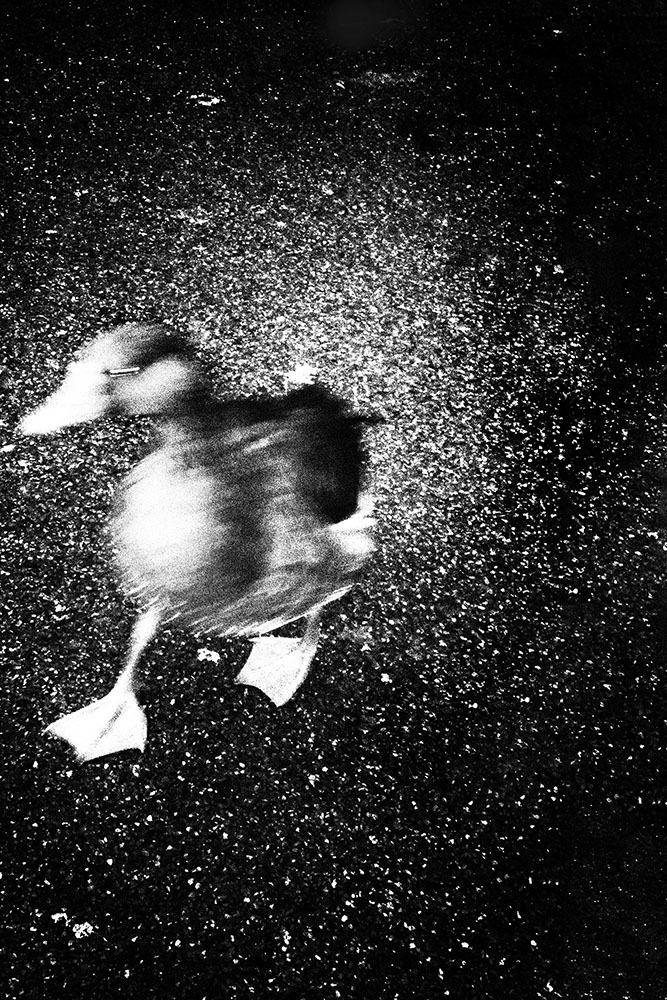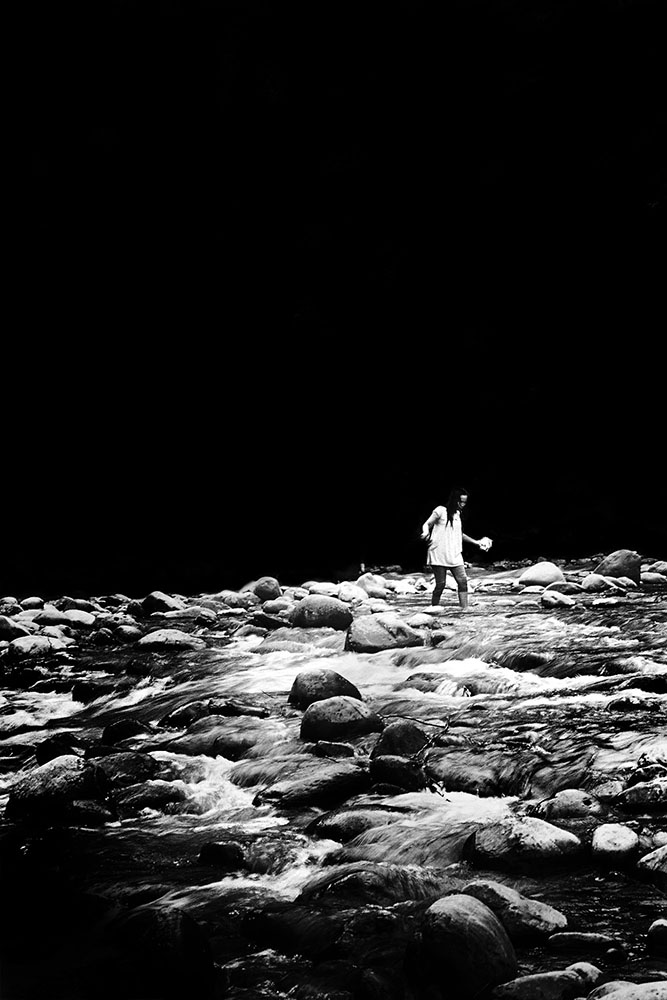All images and text by Debmalya Sinha. Used with permission.
My name is Debmalya Sinha and I’m a personal documentary photographer. As Martin Parr once said, “Unless there’s some vulnerability there, I don’t think you’re going to get good photographs”; I started looking for my vulnerabilities inside my otherwise easy and mostly satisfying life and quickly found out one can find pain even in the intense orgasms inside the most loving embraces of life if one is looking for it. Emptiness and fear became central to my photographs and my life during this period. A downward spiral of self inflicted sufferings later, I slowly realised that crisis is not only about pain and suffering. Simultaneous joy of an ephemeral moment and the sadness as it floats away is a projection of vulnerability too and can be expressed together. This helped me start my current project “Mono No Aware” where I’ve explored emptiness and togetherness concurrently in a dreamlike fictional sequence. Here is a very short video of a subset of the pictures from the project.
I am a Computer Science PhD student living in the UK. I’m a part time photographer working for small gigs for some extra cash. I am an obsessive photo-book collector! The following sections guided by your recommended questions will give the complete picture of me and my work.
My current project, Mono No Aware is a fictional narrative of a dream sequence. The idea stemmed from Haruki Murakami’s book “Kafka on the Shore” and a music album “Radiodream” by little known group named “Radio.String.Quatret.Vienna.”
Simultaneous joy of an ephemeral moment and the sadness as it floats away is a projection of vulnerability too and can be expressed together. This helped me start my current project “Mono No Aware” where I’ve explored emptiness and togetherness concurrently in a dreamlike fictional sequence.
As heavy as it might sound, the idea is really simple. Just look at the pictures and let your mind wander. See where it goes. I hope you find something new deep down.
Cameras I use:
1. Leica M6 + 35mm summicron ASPH + Zeiss 25mm ZM
2. Nikon FM3a + 28mm 2.8 + 50mm 1.8
3. Olympus XA (can’t praise this camera enough! world’s smallest rangefinder)
4. Canon 7D/450D + 35 f2.0 + 10-22mm + 85mm 1.8
5. Sony A7 + 55 Zeiss 1.8
6. Oneplus one mobile phone camera.
Sometimes I use a 5D mark3 + 24-105L (mainly for commercial gigs) and sometimes a Pentax Program A + 28 2.8 which i borrow from my PhD supervisor!
I am new at flash photography and just got a Yongnuo 560 III
Film:
I mostly use Kodak TriX and the student friendly and cheap Ilford Pan 100. For colour film I love Portra 400 and Ektar 100. I bought a few slides (Provia 100). I don’t shoot colour too much. Recently I got some Fomapan BW slides and I’m yet to develop them!
“Honestly, photography is important, shooting is not. I’m sorry if I sound sassy but I tried very hard to lose this practice of ’shooting’ which led me to constant anxiety instead of actually thinking about the frame. The documentary film about the legendary Saul Leiter, “In no great hurry” really helped me on this.”
Why did I got into photography?
The initial reason was to take pictures of nice stuff around! I sounded silly but I realise now, that was the first step into personal documentation, which changed its form leaps and bounds in since I started in 2009.
What photographers are my biggest influence?
I did write a blog post on this very topic a few months back! If I were to pinpoint one photographer, I’ll say Michael Ackerman. I see pictures obsessively so there are countless photographers whose works shake me up. I’ll definitely add Antoine D’Agata, Nobuyoshi Araki, Daido Moriyama, Jacob Aue Sobol, Anders Petersen, J H Engstrom, Nan(cy) Goldin, and Masahisa Fukase into that list.
How long I’m shooting?
I started in 2009. Joined a local online club, in a year or so noticed not many people read much about photogrpahs so grew out of it, dabbled in portraiture, psudo-fashion pictures which were basically nicely lit, sharp pictures of beautiful women. I do still keep them in portfolio because my occasional clients like them! Dabbled in “street photography” like everyone else and finally met a few guys who introduced me to Antoine’s work around 2012. Things changed drastically since then.
Why is photography and shooting so important for you?
Honestly, photography is important, shooting is not. I’m sorry if I sound sassy but I tried very hard to lose this practice of ’shooting’ which led me to constant anxiety instead of actually thinking about the frame. The documentary film about the legendary Saul Leiter, “In no great hurry” really helped me on this.
I believe a certain emotional detachment is necessary for every artists. I wander around like a dog in the streets and I shoot when something stops me. If I don’t have a camera, I don’t shoot. I try to keep it that simple.
Do I feel like a creator or documenter?
Who does not want to play god! I’d like to think myself as a creator with a pretense of documenting. This is why the title “Personal documentary” perhaps best suits my style. My works are not just things like they are, but things as i see them in context to my current mood.
What is going through my mind while I create images?
While shooting: Astonishment, joy and sadness that this moment will pass.
While making the image form the negatives/digital file: Is there any distractions/frills with the raw emotion/apathy? Is there any hypocrisy/pretension? What can I do to make it more honest?
My mental and mechanical process
Like I have mentioned before, I don’t go out to ’shoot’. I wander around aimlessly. When something moves me, I take a picture of it. The mental part here is the intensity of the emotion vs the urge to actually spend a gate in out of 36 exposures! The physical part of it is to take the picture exactly as I see it, not necessarily only through the viewfinder.
My processing technique:
I push 2 (sometimes 3) stops. I stand develop my negatives usually for 40 minutes in Rodinal. with 15-20 seconds agitation at the very end. This gives me a gritty, harsh contrasty look I want.
I scan my negatives with an Epson 550. Sharpness and details distracts me. The post processing part is to simply eliminate them so that the only thing there is left is barebones gist.
What motivates me to shoot?
The motivating factor has changed several times. Earlier I had this fear of missing out. These days I find motivation in the rush of astonishment I feel. I do conduct a few workshops on Street photography from time to time here in my university where I discuss the motivation question. I ask the participants and advice them the same thing I advice myself! “Don’t shoot. See. Shooting is the natural reaction of something your eye catches.”
